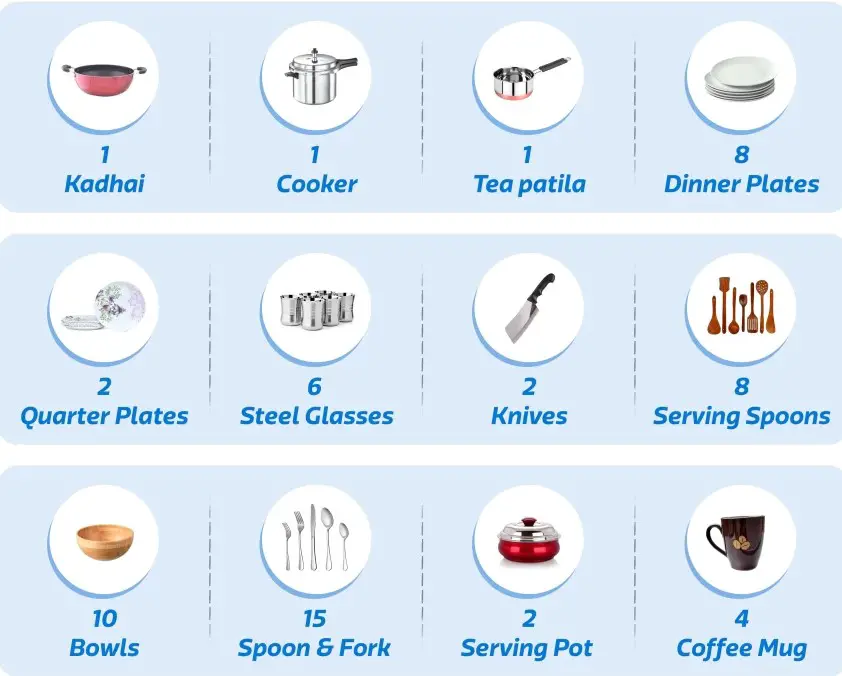If you are in the market for a Dishwasher, you might have heard about the term “Place Setting.”
Like a washing machine, which is categorized based on “Litter,” a Dishwasher is categorized based on “Place Setting.”
In this article, we will learn about “What Is Place Setting In Dishwasher” and how it is a deciding factor for choosing a dishwasher.
This comprehensive article provides valuable insights and practical tips for readers of all levels, ensuring a thorough understanding of this term.
What Is Place Setting In Dishwasher?
Place setting refers to arranging dishes, utensils, and glassware in the dishwasher to ensure thorough cleaning and prevent damage.
Proper place setting in the dishwasher is essential for maximizing space, optimizing cleaning performance, and extending the lifespan of your kitchenware.

When efficiently using a dishwasher, understanding the concept of place setting is crucial.
According to the Association of Home Appliance Manufacturers, one place setting consists of a large dinner plate, a small snack plate, a saucer, a bowl, a coffee cup, a drinking glass, a knife, two teaspoons, a dinner fork, and a small salad fork.
The bigger the place setting, the bigger the dishwasher and the more dishes you can load in a single cycle. 12, 13, and 14 place-setting dishwashers are commonly available in the Indian market.
A 12-place dishwasher is more than enough for a family of 3; however, if you are a single person or a family of 2, an 8-place setting tabletop dishwasher will do the job for you.

Importance Of Place Setting In Dishwasher?
The dishwasher’s place setting decides how many dishes and other utensils you can load in a single cycle. Proper dish arrangement is important for water and detergents to pass through for proper cleaning.
If dishes are stacked too close, they create nesting that hampers proper cleaning and sanitization because water and detergent cannot access the dirty area.
Placing items in a dishwasher is also important for the safety of glassware and delicate items. If not, the utensils will heat up and break when the spray arm rotates.
Proper Arrangement Of Dishes In A Dishwasher
Proper arrangement ensures that all the dishes are cleaned and sanitized properly without damaging the utensils. Here are some guidelines that you may follow to increase the efficiency and cleaning of a dishwasher.
How To Arrange Plates, Bowls, And Utensils
All plates should be placed vertically in the lower rack at the designated tines. Please ensure that plates are not made of plastic.
You should not place plastic plates in the lower rack, as the heater coil could melt them.
Bowls should be placed upright, preferably at the center of the dishwasher, so that they face the water jets. They should be placed only in the upper rack. Otherwise, they won’t be cleaned properly.
Other utensils, such as pressure cookers, saucepans, and similar dishes, should be placed upright on the upper rack, similar to bowls.
You can consider buying a dishwasher with an adjustable rack height so that you can load dishes of varying sizes.
How To Arrange Glassware And Delicate Items
Most dishwashers have a designated place for glassware, cutlery, and delicate items so that they do not get hit by other utensils.
Some dishwashers have a cutlery basket to load spoons, forks, and other items.
The upper rack has designated places for upright glassware. In fact, you can even clean your baby’s water bottle in the upper rack, keeping it on a vertical tine.
Conclusion: What Is Place Setting In Dishwasher?
Place setting is an important element in choosing a dishwasher. It decides the size and number of dishes it can clean in a single cycle.
Choose the correct place setting so that you don’t have to run the dishwasher repeatedly to clean your daily dishes.